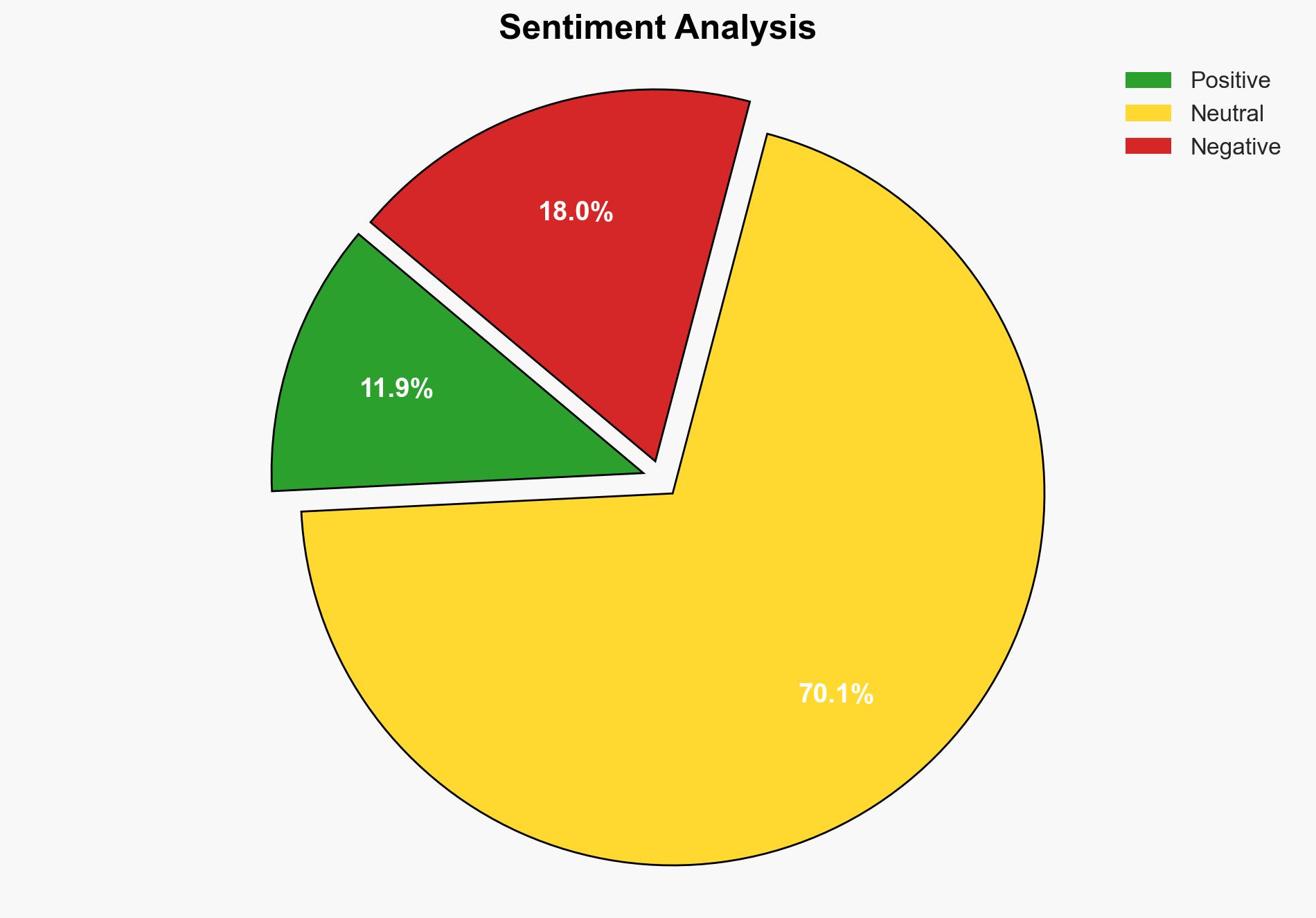Security Affairs newsletter Round 514 by Pierluigi Paganini INTERNATIONAL EDITION – Securityaffairs.com
Published on: 2025-03-09
Intelligence Report: Security Affairs newsletter Round 514 by Pierluigi Paganini INTERNATIONAL EDITION – Securityaffairs.com
1. BLUF (Bottom Line Up Front)
The latest Security Affairs newsletter highlights significant developments in cybersecurity, including law enforcement operations against cybercrime, emerging malware threats, and vulnerabilities in critical infrastructure. Key findings indicate an increase in cyberattacks targeting both private and public sectors, with implications for national security and economic stability. Immediate attention is required to address these vulnerabilities and enhance cybersecurity defenses.
2. Detailed Analysis
The following structured analytic techniques have been applied for this analysis:
SWOT Analysis
Strengths: International cooperation in seizing illegal assets and extraditing cybercriminals demonstrates effective law enforcement collaboration.
Weaknesses: Persistent vulnerabilities in widely used software and hardware, such as VMware and third-party JavaScript, remain unaddressed.
Opportunities: Advancements in AI-powered scam detection could significantly reduce cyber fraud.
Threats: Increasing sophistication of ransomware groups and state-sponsored actors poses a growing threat to global cybersecurity.
Cross-Impact Matrix
Cyberattacks on critical infrastructure in one region can have cascading effects on neighboring areas, disrupting supply chains and economic activities. For instance, the cyberattack on the Polish space agency could impact European satellite operations.
Scenario Generation
Best-case scenario: Enhanced international cooperation leads to a significant reduction in cybercrime activities.
Worst-case scenario: A major cyberattack on critical infrastructure results in widespread economic disruption.
Most likely scenario: Continued cyber threats with incremental improvements in defense mechanisms.
3. Implications and Strategic Risks
The ongoing cyber threats pose significant risks to national security, regional stability, and economic interests. The breach of a Japanese telecom giant and the discovery of new botnets highlight vulnerabilities in telecommunications. Additionally, the deployment of ransomware and malware by groups like Black Basta and Medusa indicates a persistent threat to businesses and government entities.
4. Recommendations and Outlook
Recommendations:
- Enhance international collaboration to improve cyber threat intelligence sharing and law enforcement efforts.
- Invest in advanced cybersecurity technologies, including AI-driven threat detection and response systems.
- Implement comprehensive cybersecurity training programs for organizations to mitigate human error.
Outlook:
Best-case: Strengthened global cybersecurity measures lead to a decline in successful cyberattacks.
Worst-case: Persistent vulnerabilities result in a major cyber incident affecting critical infrastructure.
Most likely: Gradual improvements in cybersecurity posture with ongoing threats from sophisticated actors.
5. Key Individuals and Entities
The report mentions significant individuals and organizations involved in recent cybersecurity events:
- Pierluigi Paganini
- Garantex
- NTT
- Black Basta
- Medusa
- Silk Typhoon
- Dark Caracal
- Kaspersky Lab





